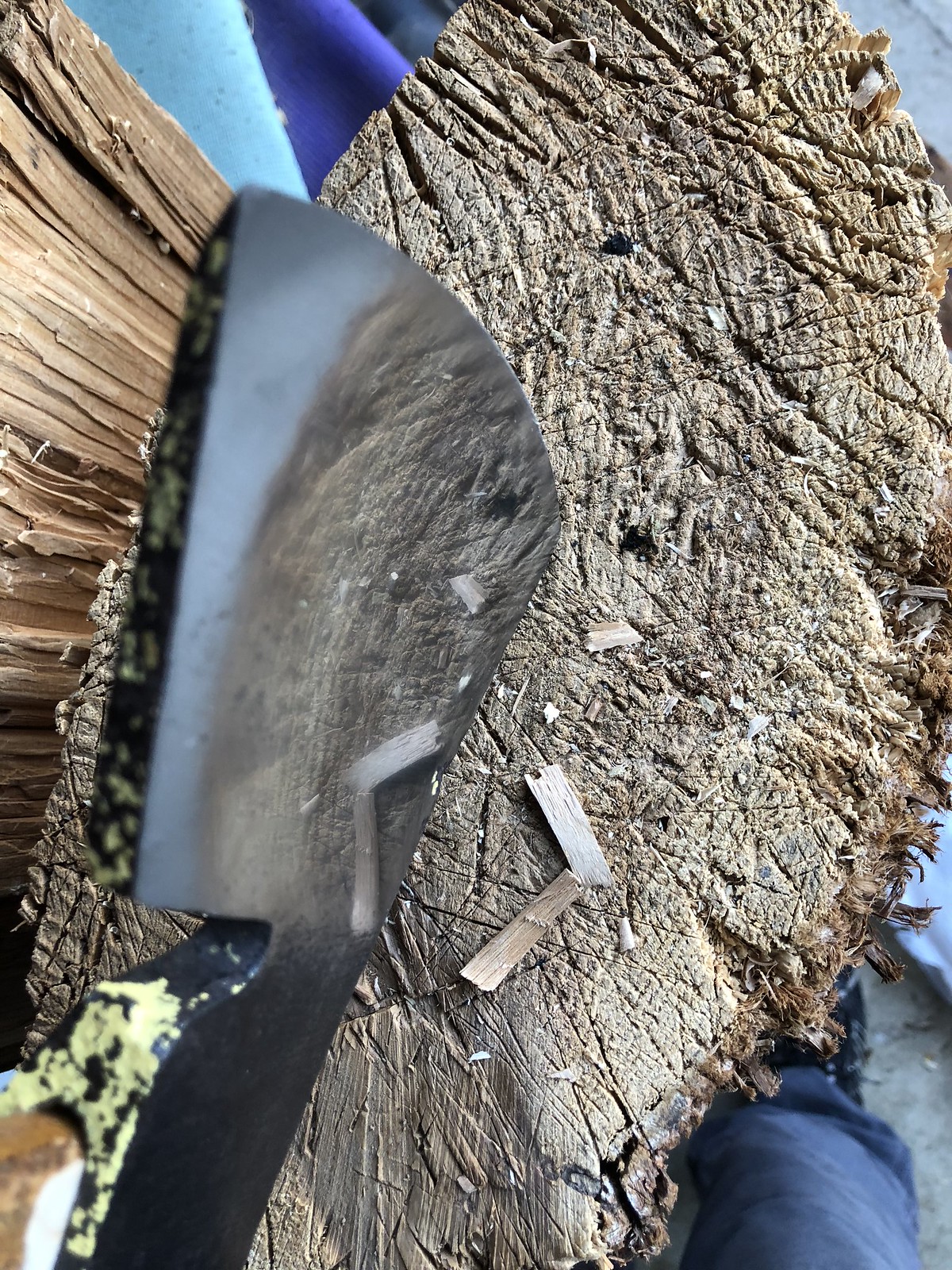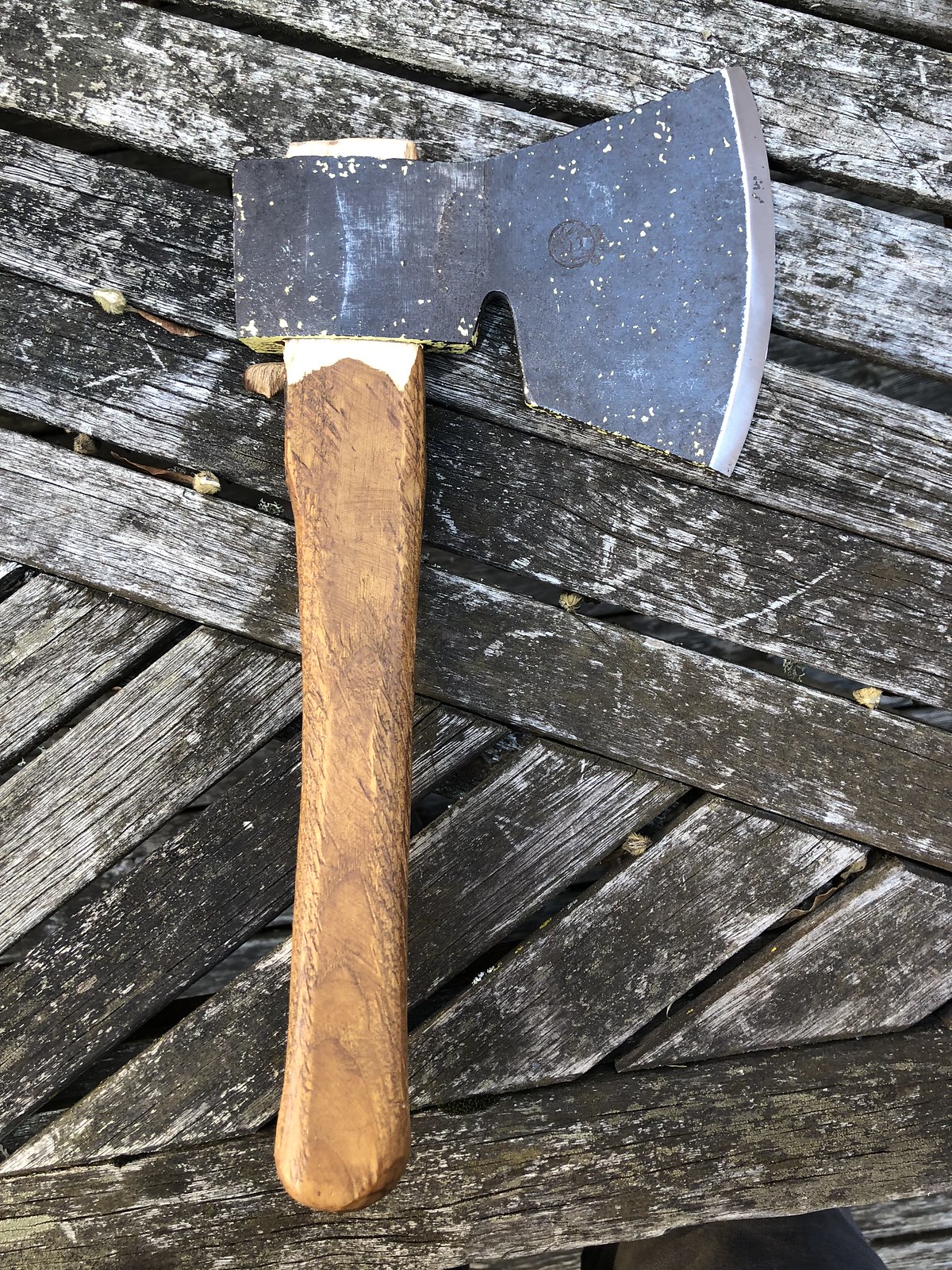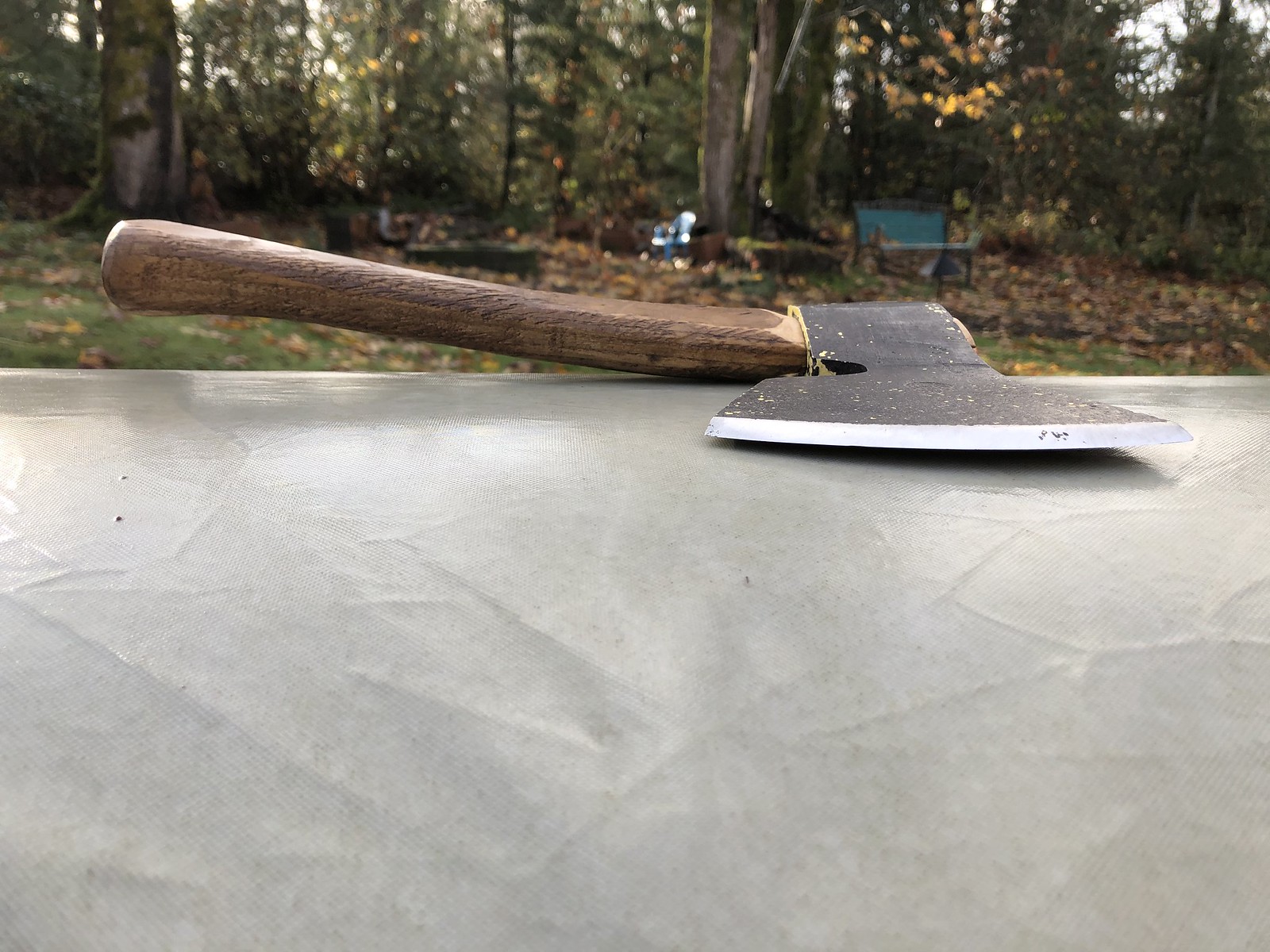- Joined
- Feb 1, 2012
- Messages
- 13,727
I would aggressively lap the back, staying on plane, until at least 1/2 inch at the bit was pit free. Then you having a plane for the bevel to meet.
What more can I add besides what Square_Peg already has?
Maybe this: go deep after those pits, (80 grit being insufficient), the robust composition of such an axe can absorb the loss of content.
Oh yeah, Square_Peg already said that.


It all sounds that familiar and you have it looking good, just the way it should. At some point will you switch to a nice flat stone?




I would definitely like to but I don’t think I have anything large enough that I can take the axe to the stone and not vise-versa.

For less friction: Try lapping it from teh cutting edge to the back, in stead of up and down? All the graining goes the way the axe is not moving? And as for that small spot: Looked at your goosewing? Thats actually a bit convex at the flat side. So what you could do is make it the same, leaving a higher spot in the middle compaired to the sides. Should decrease friction a little to? But all in all, I kind of like the little rough spot for looks on the underside. As for the topside: Just leave it as is, shouldn't be much of a problem.
 FWB.axt
FWB.axtThe sweep has two main functions related to reducing surface contact. It eases the entry of the edge so you are never stuck with the difficulty of removing so little wood that your work becomes ineffective and incredibly difficult since the primary characteristic of using any axe is the thrusting action. The large(r) contact surface on that side exerts more force and draws the blade deeper into the cut which you must counter if you're after a "straight" plane so the curve provides a fulcrum for pivoting off from. It's basically the double bevel on an exaggerated scale. This feature is a trade-off between getting a flat surface and facilitating the action. A perfectly flat back together with a straight edge is the ideal condition for flatness but in the practical sense this is unrealistic. So even though we speak of the flat side, it's an oversimplification, or a kind of short hand to say so and it would never really exist on an effective axe. Maybe this is why we got chisels and planes and sniks.





